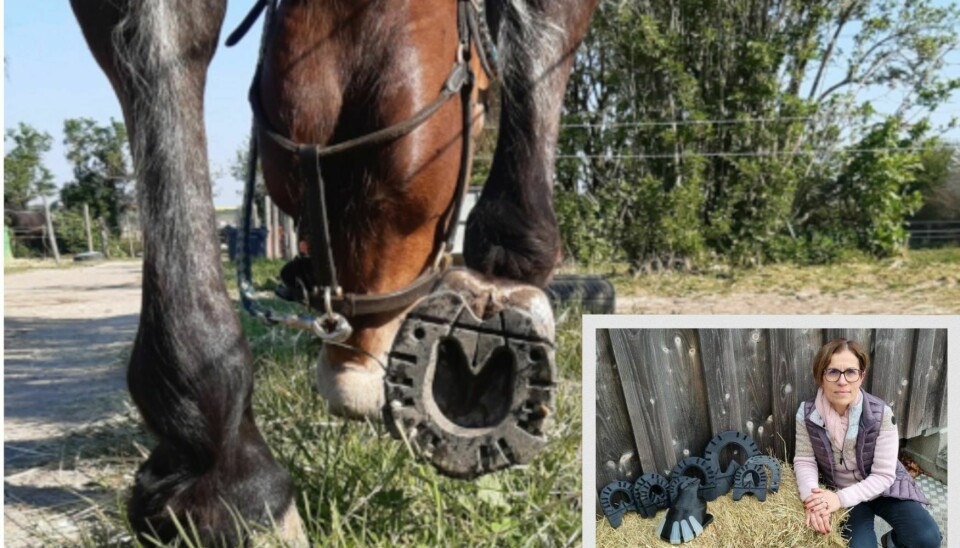French couple innovate horse hoof health with plastic shoes
It may mean the end of the ‘clip clop’ sound but the polyurethane horseshoe is said to be a healthier alternative to metal
Stéphanie Saunier and her husband Sébastien have developed the plastic shoe that allows more blood flow to the hoof
S.Saunier
An enterprising couple who were inspired to move into plastic horseshoe manufacturing after encountering supplier problems say their product is better for hoof health.
Stéphanie and Sébastien Saunier’s interest in the product began when they bought a light draught horse called Charlie.
A hoof injury when he was young made traditional metal shoes uncomfortable and they were forced to look for alternatives.
Original supply stopped
“There is a lot of interest now in going without shoes entirely, but the ground around here is rocky and it was not practical,” said Mr Saunier, who lives near Lyon.
Instead, they bought plastic horseshoes from an Australian firm, which made them in China.
“The interest was that these shoes, unlike other plastic shoes, had no metal inserts at all,” said Mr Saunier.
“We became their French distributor, but then they started having supply problems in 2019 and we could no longer get the shoes.”
Read more: Boost for horse and pony clubs in France
Made changes on computer model
The couple, both of whom have other careers (she as a dentist and he as a horse massage therapist), took a model of the plastic shoes to local firms to see if they could make a copy.
“The first thing they did was make a computer model. From that, we realised we could make our own version of the shoe, incorporating changes as we went along,” said Mr Saunier.
“We are now on our fourth model and have steadily expanded sales as people learn about the product.”
Metal horseshoes can cause health problems
A big benefit of plastic shoes is that they allow the hoof more movement, boosting blood supply.
“Horses often develop arthritis and vets are now fairly sure that having metal shoes on all the time is one of the causes,” Mr Saunier said.
Read more: ‘We travel slowly through France in our tiny horse-drawn caravan’
Can be nailed or glued on
Although more expensive to buy – prices range from €39.90 for small sizes through to €106.80 for the largest – the shoes, made of polyurethane, can be reused at least three times, making them cheaper in the long run than steel equivalents.
Farriers can take off the shoes to trim hooves and fix them with their usual tools.
As well as being nailed on, some models can be glued, an advantage for horses with delicate feet.
The couple’s firm, Safe-HP, has sold shoes for all sorts of equine activity except racing, where horses are shod with very light metal ones.
Used in French dressage team
A member of France’s dressage team, Alexandre Ayache, now uses them in competition – though only after a period of adjustment.
“The sound of a horse wearing our shoes is very different from the traditional ‘clip-clop’,” said Mr Saunier.
“Alexandre Ayache has one horse, from Spain, with a very heavy stamp.
“When the new shoes were put on, he had to change how he worked with him, because he had been using his ears for feedback to a large degree, without knowing it.”
The couple are currently developing a recycling scheme for the shoes.





























